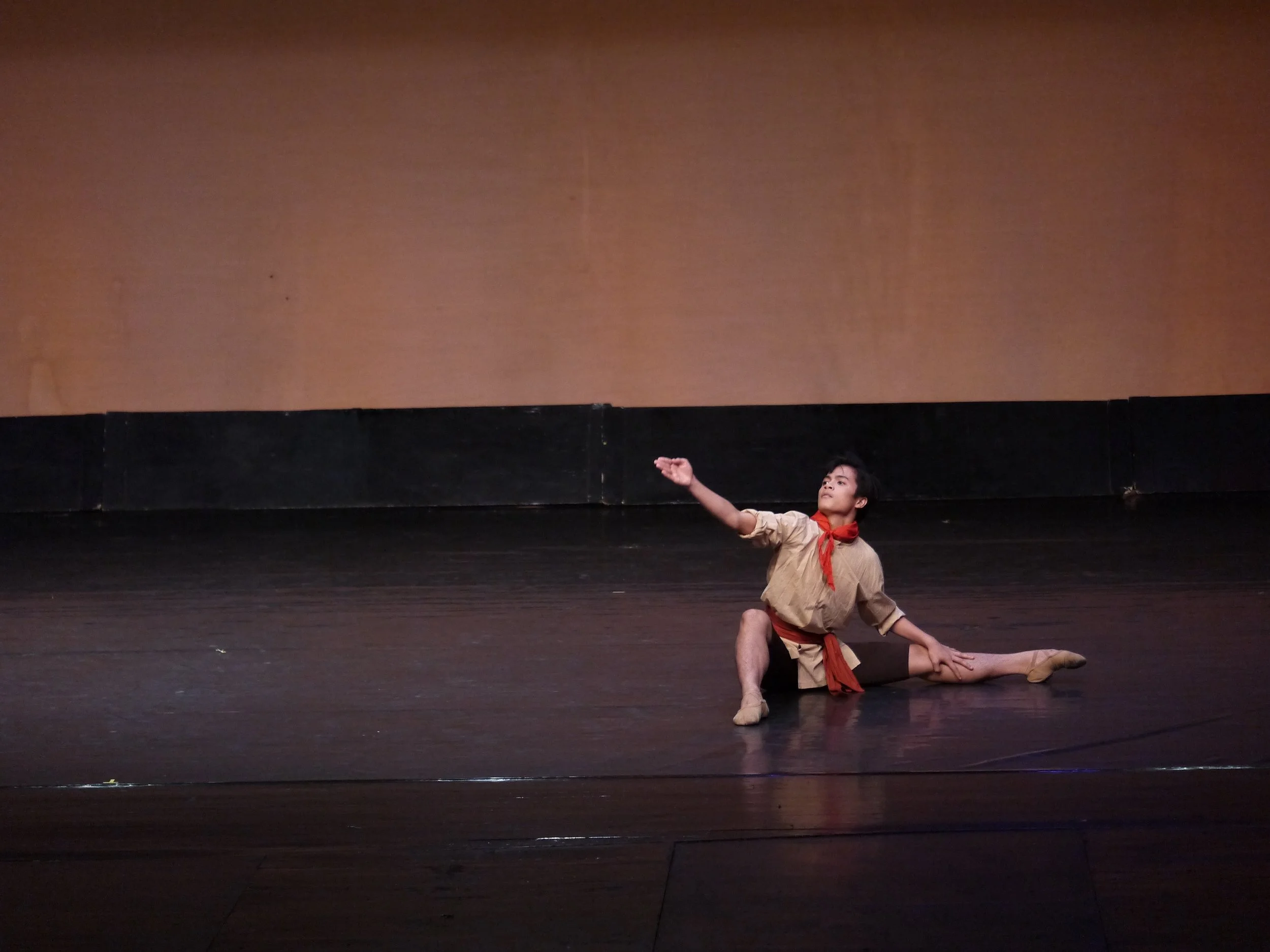Honoring and humanizing heroes in dance
In the dance-drama Gabriela ng Vigan (1996), Lisa Macuja-Elizalde and Osias Barroso perform as the fearless leaders Gabriela Silang and Diego Silang who sought independence from Spanish colonialism.
For their acts of bravery, notably in resisting foreign aggressors, Filipino heroes occupy an exalted state and are heralded for their selflessness and patriotism long after they are gone.
As Andres Bonifacio in Bayani, Niño Guevarra portrays the bravery of the hero through bold and aggressive movements. Photo by Ocs Alvarez
Ballet Manila has highlighted some of these historical figures in choreographies that, while extolling their virtuous traits, also explore inner struggles which humanize them and make them relatable to present-day audiences.
In 1996, Osias Barroso created the dance-drama Gabriela ng Vigan (with libretto by the late Ballet Manila artistic director Eric V. Cruz) which focuses on Gabriela Silang, the female revolutionary from Ilocos Sur. After the assassination of her husband, Diego Silang, who fought against Spanish forces, Gabriela is known to have taken the reins of leadership and marshalled Diego’s followers in continuing the attacks on Spanish strongholds.
Gabriela ng Vigan – which had its world premiere on April 19, 1996 at the Puerta Real Gardens as part of Intramuros Evenings – shows the title character’s progression from wife and adviser of Diego Silang to head of the rebel forces herself, eventually leading to her capture and execution in Vigan on September 20, 1763.
In Ka Andres, Rafael Perez channels the softer side of the revolutionary leader Andres Bonifacio by showcasing his writing ability. Photo by Giselle P. Kasilag
Gerardo Francisco Jr. has made two dance pieces centering on hero Andres Bonifacio whom he admires for his courage and resolve. Bayani (Hero) was a competition piece he made for Niño Guevarra in 2006. The choreographer echoed the traditional interpretation of Bonifacio as someone who doesn’t back down from a fight and so he incorporated bold and aggressive movements in the dance.
In contrast, his later choreography called Ka Andres – another competition piece, done in 2018 – zeroed in on the softer side of the leader who led charges against Spanish colonial troops. Fascinated that Bonifacio could write poems just as well as he could fight, he shone a spotlight on the former aspect. Thus, in the two-minute piece, dancer Rafael Perez went through a series of steps that included him in the act of scribbling.
For his tribute to the martyred priests known as “Gomburza” in 2009, Ernest Mandap chose to explore the moments leading to their execution. Mariano Gómez, José Burgos, and Jacinto Zamora were three Catholic priests falsely accused of plotting against Spanish authorities following the 1872 Cavite mutiny and who were ordered executed by garrote on February 17, 1872 in what is now Rizal Park.
Gomburza is a dance piece exploring the emotions of the priests Mariano Gómez, José Burgos, and Jacinto Zamora in the moments leading to their execution. Photo by Ocs Alvarez
“I tried to imagine how to be in their skin, of what a human would feel in that particular situation – fear, anger, revolt, anxiety, hope, brotherhood,” says Mandap. “Every step has a sense, an emotion, on why you do that movement or projection.”
As Gomburza, the trio of Gerardo Francisco Jr., Alvin Santos and Niño Guevarra wore blindfolds, intensifying the emotions and adding a different dimension to the piece. The element of the unknown was underscored, while also increasing the challenge for the dancers who must still be in sync despite being practically in the dark.






